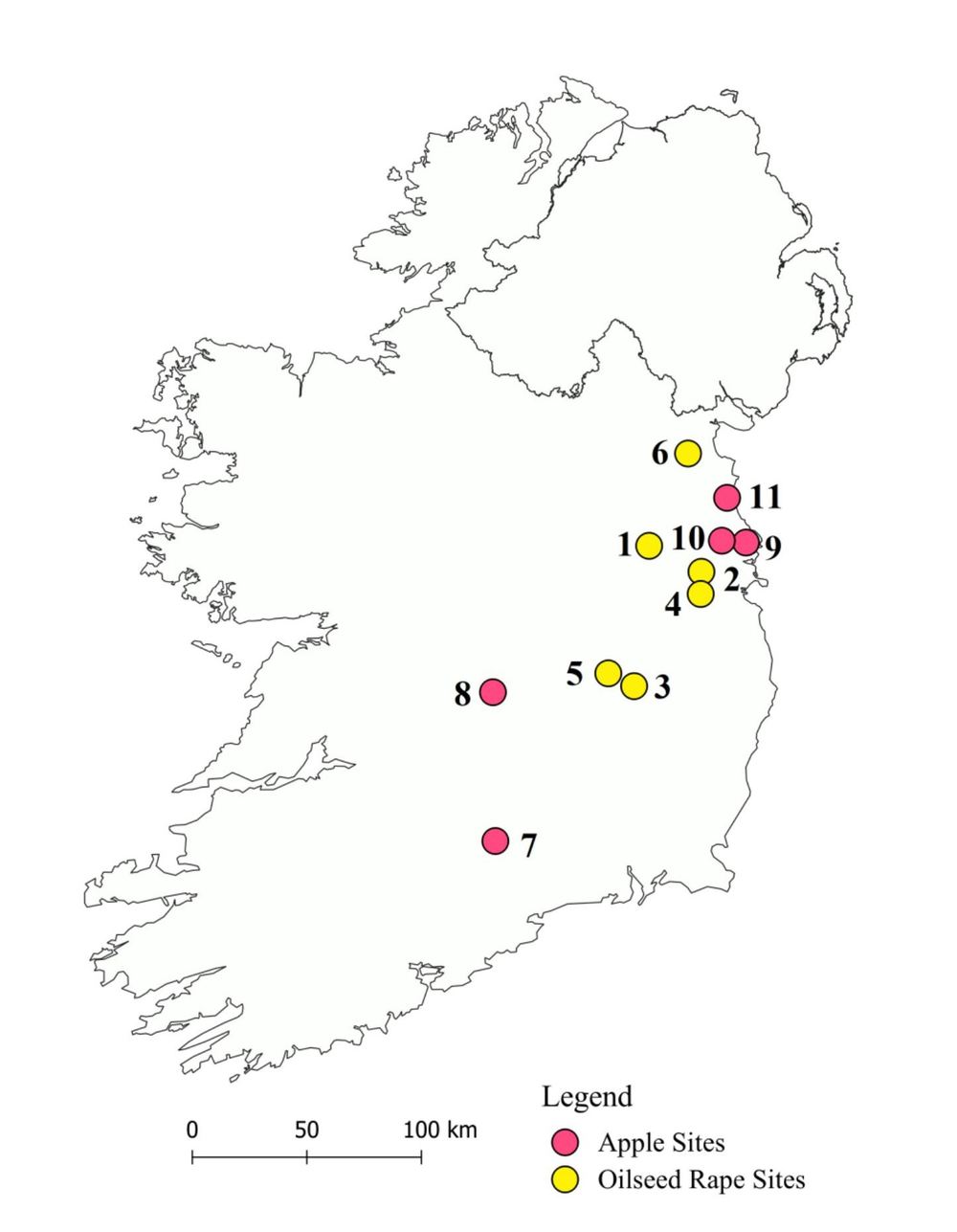pan-european assessment, monitoring, and mitigation of stressors on the health of bees
PoshBee researchers confirm the importance of field margins for insect pollinators
A new PoshBee research article, published in the open access Journal of Pollination Ecology, studies the pollinating insects associated with twо mass-flowering crops - apple and oilseed rape, and compares the insect fauna of the main crop with that in the field margins in the grass-dominated agricultural landscapes of Ireland.

Location of study sites. Numbers correspond with descriptions in Appendix I. Image created with QGIS software. Source: Bottero, I., Hodge, S., & Stout, J. (2021). Taxon-specific temporal shifts in pollinating insects in mass-flowering crops and field margins in Ireland. Journal of Pollination Ecology, 28, 90–107. https://doi.org/10.26786/1920-7603(2021)628.
The paper titled "Taxon-specific temporal shifts in pollinating insects in mass-flowering crops and field margins in Ireland" is authored by Trinity College Dublin PoshBee researchers Irene Bottero, Simon Hodge, and Prof. Jane Stout. The study discovers that different insect groups respond differently to the presence of the flowering crop, with honey and bumble bees more abundant in crops than in margins during crop flowering, but more hover flies and butterflies in margins throughout.
Furthermore, the composition of the insect assemblage also shifts over time due to taxon-specific changes in abundance. For example, solitary bees are most abundant early in the season, whereas hover flies peak and butterflies decline in mid-summer. After the crop flowering period, floral abundance and diversity is maintained via margin plants, but by late summer, floral resources decline.
The results from the study confirm the importance of field margins for insect pollinators of entomophilous crops set within grass-dominated landscapes, even during the crop flowering period, and provide additional support for agri-environment schemes that protect and/or improve field margin biodiversity.
The results also demonstrate that although shifts in insect and plant communities may be linked phenologically there may not always be simple relationships between insect and floral abundance and richness.
Read the full paper here.